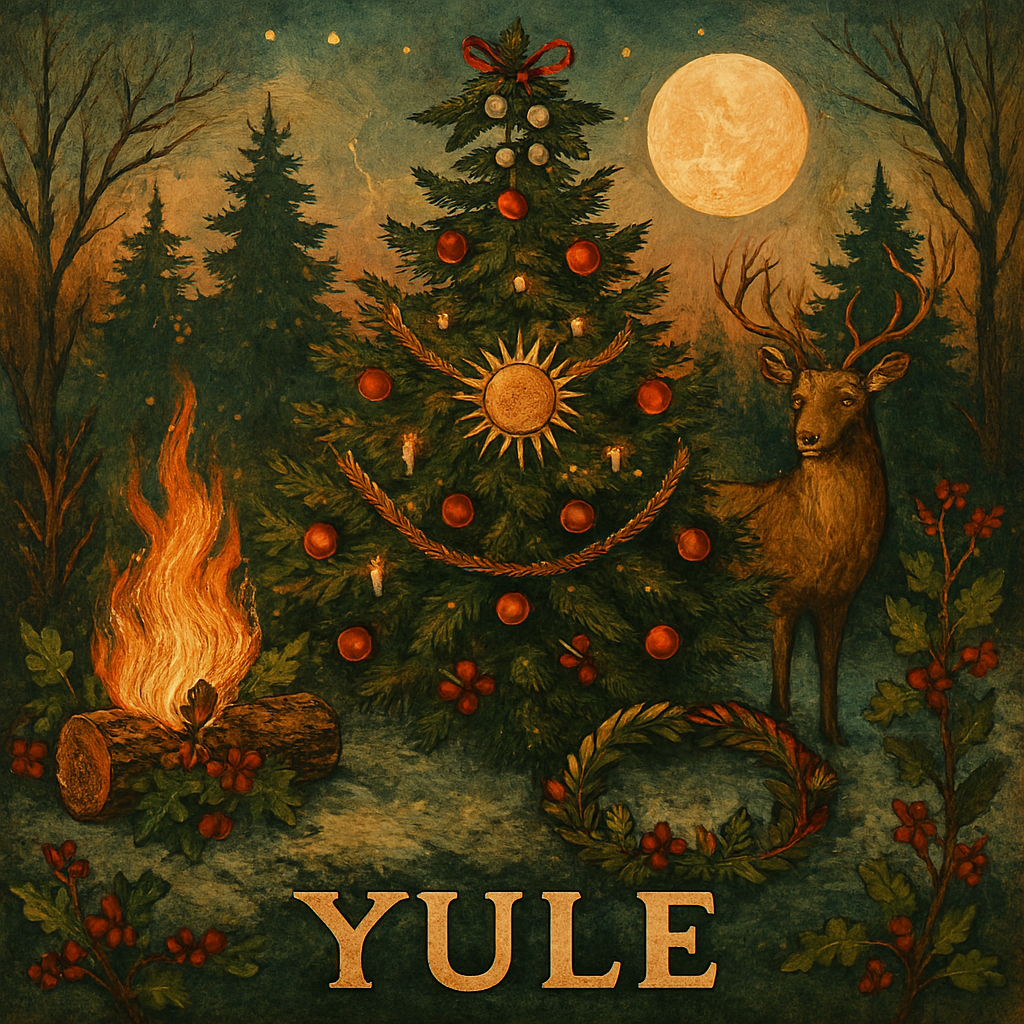
Yule, celebrated around the time of the Winter Solstice(usually around December 21st-23rd), is one of the oldest known winter festivals, deeply rooted in Pagan traditions across Northern Europe. Marking the longest night and the rebirth of the sun, Yule honours the cyclical nature of life, death, and renewal. Though modern Christmas customs have absorbed many Yule elements, the original festival remains a rich tapestry of myth, ritual, and seasonal reverence.
Historical Origins
Yule derives from the Old Norse word jól, referring to a midwinter festival celebrated by Germanic peoples. Its timing coincides with the Winter Solstice—typically around 21st December—when the sun reaches its lowest point in the sky and begins its gradual return. This astronomical event symbolised hope and rebirth, prompting feasting, fire rituals, and honouring of deities associated with light and fertility.
In Norse mythology, Yule was linked to Odin, the Allfather, who was said to lead the Wild Hunt—a ghostly procession across the winter skies. This spectral cavalcade was believed to gather the souls of the dead and bring omens for the coming year. The Wild Hunt motif later influenced European folklore and even aspects of Santa Claus lore.
Folklore and Symbolism
Yule is steeped in symbolic traditions that celebrate nature’s resilience and the promise of renewal. Key folkloric elements include:
- The Yule Log: Traditionally a large oak or ash log burned in the hearth to honour the sun and invite prosperity. Embers were kept to light the next year’s fire, symbolising continuity.
- Evergreens: Holly, ivy, mistletoe, and fir were revered for their ability to thrive in winter. They were used to decorate homes and altars, representing eternal life and protection.
- The Sun Child: In some traditions, the rebirth of the sun is personified as the birth of a divine child, echoing themes of light emerging from darkness.
- Animal Spirits: Deer, boars, and wolves were sacred to Yule, often appearing in myth and ritual. The stag, in particular, symbolised the Horned God—a masculine archetype of nature and fertility.
Rituals and Celebrations
Yule was a time of communal gathering, storytelling, and spiritual reflection. Common practices included:
- Feasting: Sharing food and drink was central, often involving roasted meats, spiced ales, and baked goods. Wassailing—blessing orchards and livestock—was performed to ensure abundance.
- Candle and Fire Magic: Fires and candles were lit to honour the returning sun and dispel winter’s darkness. Bonfires and lanterns were used in solstice vigils.
- Gift-Giving: Exchanging handmade gifts, charms, and tokens was a way to express gratitude and strengthen bonds. Items often carried symbolic meaning—such as sun motifs, protective runes, or natural materials.
- Divination: The solstice was considered a liminal time, ideal for scrying, rune casting, and seeking guidance for the year ahead.
Modern Revival and Gift Traditions
Contemporary Pagan and Wiccan communities continue to celebrate Yule as part of the Wheel of the Year. While customs vary, many incorporate ancestral practices with modern sensibilities. Gift-giving remains a cherished tradition, often focused on:
- Nature-Based Gifts: Crystals, herbs, beeswax candles, and handcrafted items honour the earth and its cycles.
- Symbolic Decor: Sun wheels, pentacles, and evergreen wreaths are popular Yule gifts, representing protection and renewal.
- Spiritual Tools: Tarot decks, rune sets, and ritual kits are exchanged to support personal growth and magical practice.
- Seasonal Treats: Homemade preserves, solstice breads, and spiced teas evoke the warmth and abundance of the season.
Conclusion
Yule is more than a precursor to Christmas—it is a profound celebration of nature’s rhythms, ancestral wisdom, and spiritual renewal. Its enduring symbols and rituals continue to inspire those who seek connection with the earth and the turning of the seasons. Whether through firelight, folklore, or thoughtful gifts, Yule invites us to honour the darkness, welcome the light, and embrace the promise of new beginnings.
